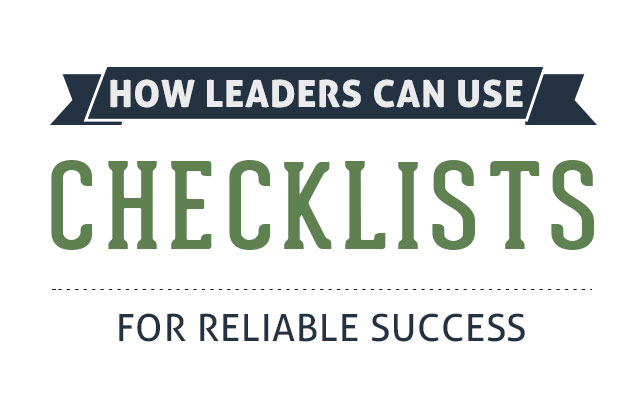Don’t confuse checklists with ordinary to-do lists.
In their basic form to-do lists are haphazard lists of unclear commitments which cause needless anxiety.
Checklists are completely different. They break complex procedures into discrete steps which are then documented to reduce error.
Checklists are used all over the world.
And they are the most under-rated productivity hack.
A 19 Item Checklist Reduced Patient Deaths by 40%
A study headed by Dr. Atul Gawande of the Harvard School of Public Health brought the astonishing ability of checklists to prevent surgical procedure complications to public notice.
And since then the usefulness of this tool has been acknowledged by most professional communities.
Pilots use pre-flight checklists.
Army operations are guided by checklists.
All undertakings that involve more than a few actions can be better executed with the assistance of checklists.
Do You Lead a Team? Checklists Will Align Your Team For Success
Managers and senior executives have lagged behind when it comes to leveraging the power of checklists. The concept is so simple that in today’s fast paced, distraction filled world, it seems destined to fail.
But the reality couldn’t be more different!
-
- Checklists aid effective delegation. With them in hand team members can confidently complete aggravating and complex tasks. The transfer of legacy knowledge – from leader to executor – becomes easy. And managers make the most of their talent.
-
- Checklists sharpen professional judgment. Most managers are bona fide knowledge workers. They need to think on their feet and extract tasks/inputs from a jumble of emails, in-basket slips and Instant Messages to get the job done. Checklists free up mind space and cognitive power. With the details out of the way, executives identify patterns faster, find connections quicker and become better drivers of innovation. Remember – the mind is for having ideas, not holding them!
- Checklists are a precursor to automation. What you can’t document, you can’t automate. And without automation you’re limiting growth. 50% of the tasks managers handle are repetitive in nature. With checklists these can be completed without avoidable errors or indeed handed over to a software solution.
Even the contextualized to-do lists advocated by Getting Things Done® are checklists of Next Actions grouped together by the setting in which they can be optimally completed.
Steps to Creating Great Checklists
Not all checklists are made equal.
Listed here are 6 key steps that lead to killer checklists – checklists which get things done.
(i) Identify the operations that can benefit the most from the introduction of checklists. If you and your team see quick results, you’ll be motivated to turn checklist consultation into a habit.
(ii) A checklist should be comprised of precise steps so that the person reading isn’t confused about what needs to be done.
(iii) Keep it short and simple. Ideally no more than a page. A checklist isn’t a guidebook. It supports existing knowledge and executor memory by listing out tasks that should not be skipped.
(iv) Specificity is important. Know exactly when a checklist should be used. If you’re sharing it with your team, they should be fully aware of how the checklist can help them avoid errors.
(v) Design matters. You don’t have to get a professional to spruce up your checklist. But a document that’s easy to read is one that gets used.
(vi) Test, test, test. Checklists that aren’t tested in the real world are disasters waiting to happen. Most documents evolve with time and experience. Make sure yours do too!
So much in life is unpredictable.
Checklists bring a measure of certainty and predictability to the madness.
They may seem overly simple. But that just boosts chances of adoption.
Create a checklist for yourself today and put it to the test.
You’ll find yourself getting things done with less stress.
I believe our work should be an expression of our most creative selves. I work with business owners and their teams to achieve stress-free productivity.

